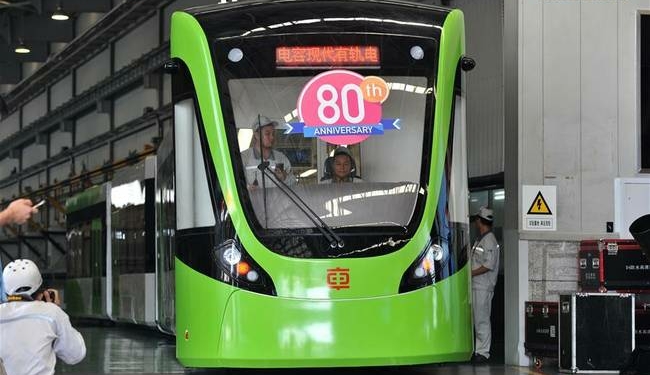source: TreeHugger news
Everyone agrees that electric rail transportation is the greenest way to go, but hanging the wires needed to convert from diesel to electric can be very expensive, particularly if there are a lot of bridges that have to be rebuilt to accommodate the overhead wires and pantographs that transfer the electricity to the train.
In Ontario, Canada, the government is considering an alternative to overhead wires: Hydrogen powered fuel cells. But as John Michael McGrath points out, fuel cells are like unicorn dreams, “the wonder technology of the future for the past 20 years” and as we have pointed out, hydrogen is either stripped out of natural gas or made with electricity, which pretty much makes it an expensive battery.

But there is another alternative, one that we have dreamed about for years on TreeHugger: Supercapacitors. Unlike batteries, which store electricity through a chemical reaction, capacitors store energy in an electric field. They cannot hold as much energy as a battery but because there is no electrochemical reaction, they charge up almost instantly. As Battery University explains,
A capacitor stores energy by means of a static charge as opposed to an electrochemical reaction. Applying a voltage differential on the positive and negative plates charges the capacitor. This is similar to the buildup of electrical charge when walking on a carpet. Touching an object releases the energy through the finger.
While in a discussion with structural engineer Dennis Poon, I learned that a company in China has developed supercapacitor powered trains. According to the China Academy of Sciences website and China Daily, the China Railway Rolling Stock Corporation (CRRC) has built a light rail system using supercaps that can be fully charged in a 30 second stop and then run three to five kilometres to the next stop. 85 percent of the energy generated from braking the train is returned to the capacitors. It can travel at 70 km/h and hold 380 passengers.
Supercapacitors make a lot of sense for transit; there are no ugly overhead wires, and they are stopping and starting anyway and charge up so quickly. An electric bus would have to carry enough batteries to power it for its entire run; a supercap powered bus or tram only has to make it to the next stop.
But then like hydrogen powered fuel cells, we have been writing about supercap powered cars since 2007 and buses since 2009 so perhaps they are all still unicorn dreams.
































